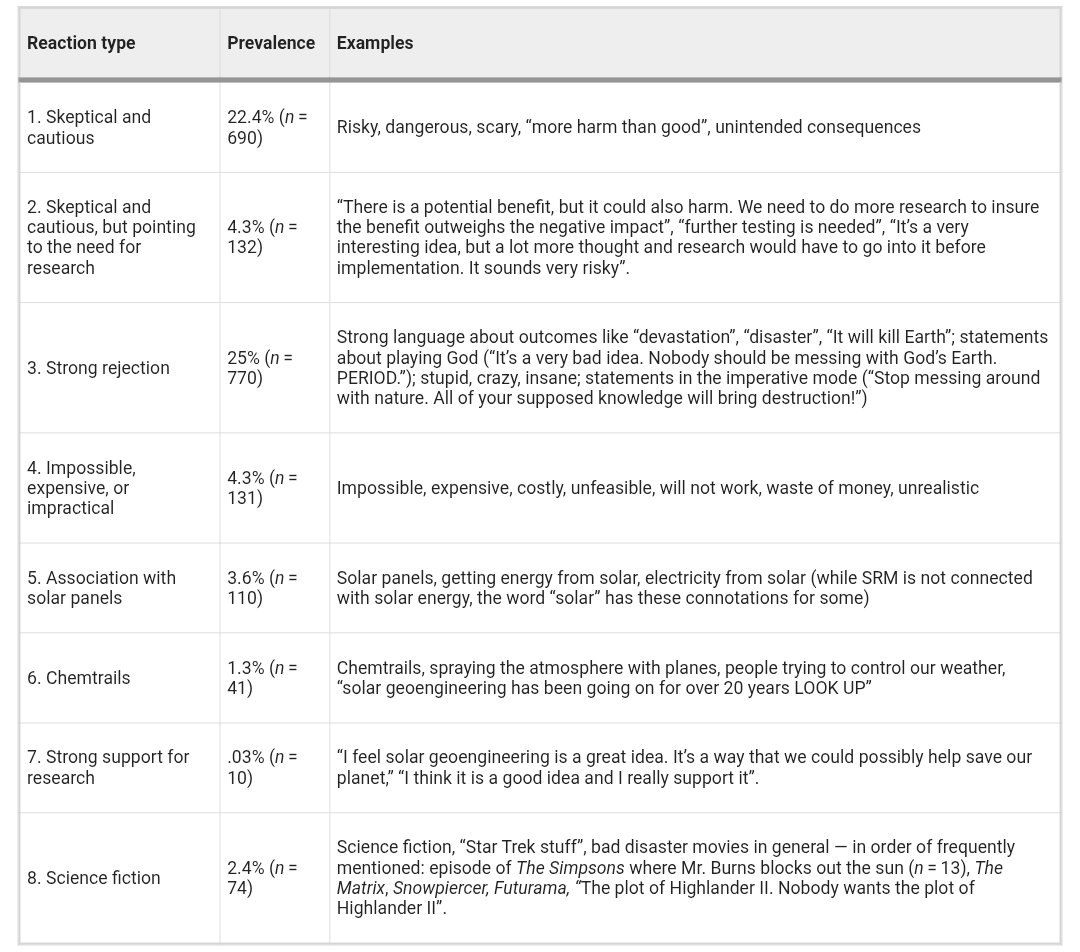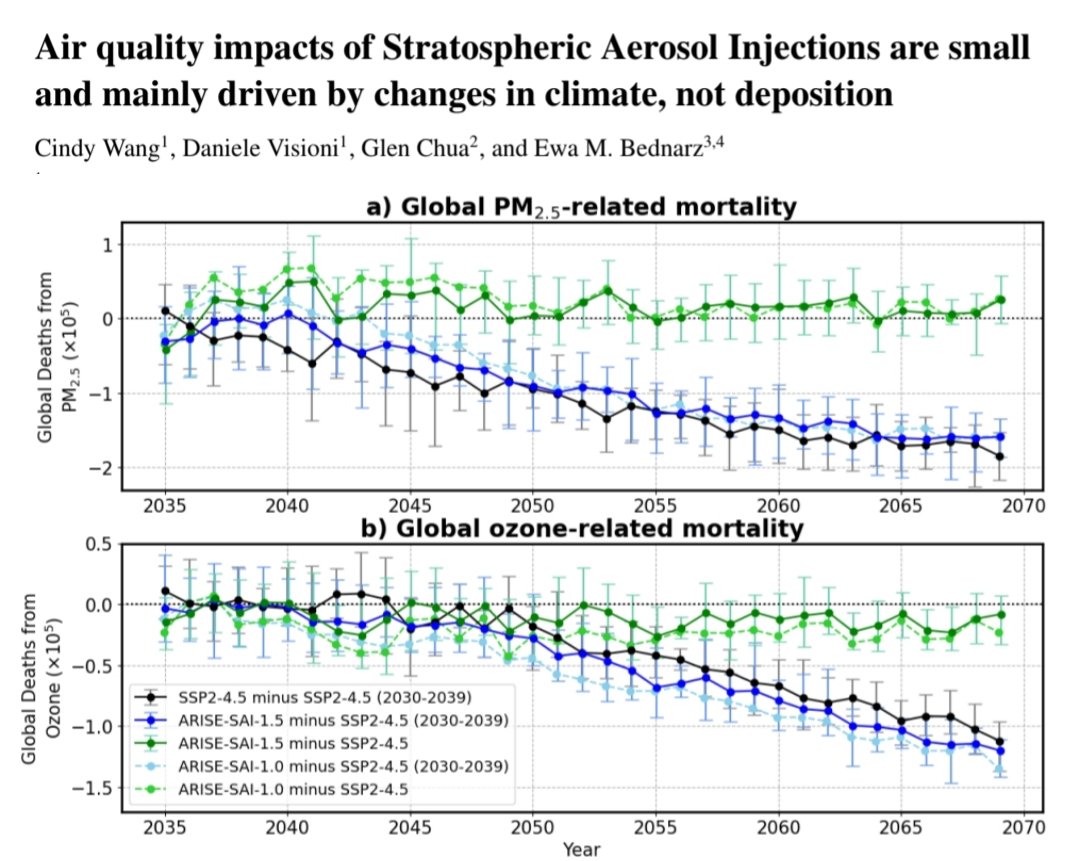🚨New research out on US public perceptions of #SolarGeoengineering:
More Americans oppose SRM research than support it, and 1 in 5 believe government-led atmospheric modification is already underway.
DETAILS🧵1/11
More Americans oppose SRM research than support it, and 1 in 5 believe government-led atmospheric modification is already underway.
DETAILS🧵1/11

2/ Using 64 interviews, 10 focus groups, and a survey of 3,076 Americans, the study found strong initial rejection of solar radiation modification (#SRM) as a research priority.
Skepticism, fear of unintended consequences, and concern over “playing God” were dominant themes.
Skepticism, fear of unintended consequences, and concern over “playing God” were dominant themes.

3/ Only 32.6% supported further SRM research. A notable 43.7% opposed it. For comparison, support was ~80% in similar studies from a decade ago. Enthusiastic support is now virtually nonexistent in qualitative responses. 

4/ SRM remains unfamiliar to most: 57.5% of survey respondents said it was entirely new to them. But once introduced, many respondents voiced instinctive rejection. Strong opposition was often driven by moral concerns and distrust in scientific overreach. 

5/ When support for research did exist, it was reluctant and conditional. People expressed the need for more data before endorsing deployment.
Crucially, 71% preferred SRM research to be conducted by universities, not governments or companies.
Crucially, 71% preferred SRM research to be conducted by universities, not governments or companies.

6/ Belief in ongoing geoengineering is no longer fringe. 20.6% of Americans said it's somewhat or completely true that the US government is already putting chemicals into the atmosphere to counter global warming. 49.6% were unsure. 



7/ This belief is not best understood as misinformation. The authors introduce the concept of “para-environmentalism” - a permutation of environmental concern, rooted in skepticism of elite institutions, that blends conspiratorial and ecological anxieties. 

8/ Chemtrail beliefs and weather modification suspicions clustered more around younger, female, conservative, and less-educated respondents.
But uncertainty spanned all political affiliations, suggesting public confusion more than ideology.
But uncertainty spanned all political affiliations, suggesting public confusion more than ideology.

9/ Focus group quotes show that distrust in environmental governance fuels para-environmentalism.
Participants cited failures in recycling, lack of transparency in policy, and “feeling manipulated” by elites - undermining trust in any new intervention.
Participants cited failures in recycling, lack of transparency in policy, and “feeling manipulated” by elites - undermining trust in any new intervention.
10/ The study critiques the “deficit model” of public engagement, i.e., simply feeding the public more facts. Instead, it calls for two-way dialogue, empathetic listening, and locally grounded education to address both cognitive and emotional concerns.
📝For more details, read the study entitled "Public concerns about solar geoengineering research in the United States" here:
🧵11/11 #SRM #SolarGeoengineeringnature.com/articles/s4324…
🧵11/11 #SRM #SolarGeoengineeringnature.com/articles/s4324…
"Unroll" @threadreaderapp
• • •
Missing some Tweet in this thread? You can try to
force a refresh












